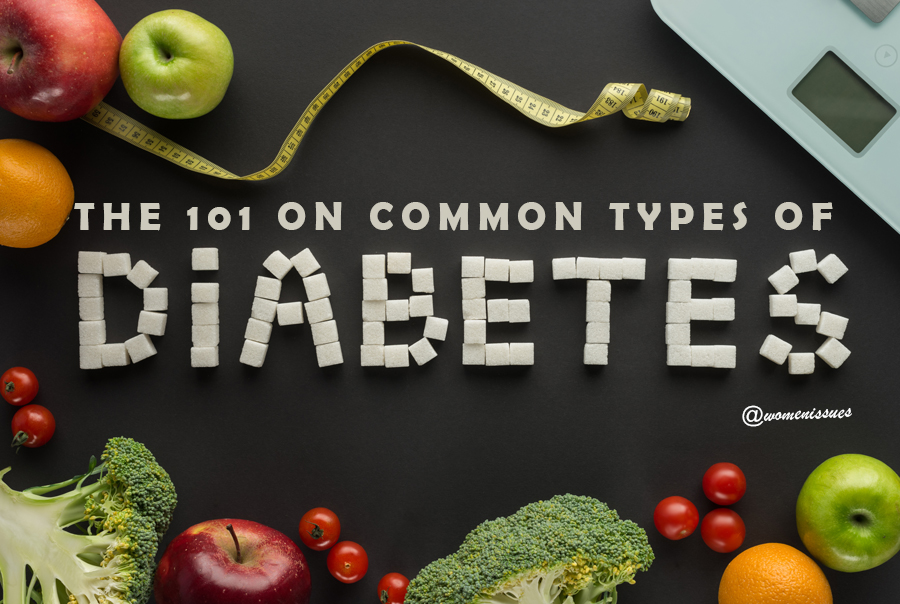Many people live with diabetes diagnosed and undiagnosed worldwide and the numbers are increasing. In the past year, a study has shown that in Africa there were 9 million people with diabetes and it is estimated by 2045 it will be 47 million people affected. 1 out of 2 people have diabetes and they don’t even know they have it.
WHAT IS DIABETES?
Diabetes is a chronic disease that affects the body’s ability to process blood glucose, also known as blood sugar or you may simply call it a sugar disease. Our pancreas has cells called the beta cells; these beta cells are responsible for making insulin. Insulin is a hormone made by the pancreas and is responsible for breaking down the sugar in the blood that will be used throughout the body. A person is declared diabetic if insulin is no longer produced then sugar gets out of control because there will be nothing controlling it.
There are different types of diabetes, which have different kinds of treatments. The most common types of diabetes are type 1, type 2, and gestational diabetes, which we will discuss in more detail.
TYPE 1 DIABETES
Type 1 diabetes is also known as juvenile diabetes because it is usually found in kids and young adults so a person living with type 1 diabetes can be diagnosed during childhood. It occurs when the body does not produce insulin or it only produces very little.
HOW TO IDENTIFY TYPE 1 DIABETES?
Type 1 diabetes symptoms usually appear within a few days or weeks. These include:
- increased or constant hunger
- too much thirst and dry mouth
- frequent urination
- blurred vision
- always tired or fatigue
- sudden weight loss with no trigger or obvious cause
- sudden bedwetting in children
WHAT TO EAT
- Saturated fats (olive oil, avocado oil, canola oil, vegetable oils, etc.
- salmon
- dark leafy greens
- beans
- wholegrains
- tomatoes
- citrus fruits
avoid -added sugar, excessive alcohol, smoking
TREATMENT
This type of diabetes needs daily insulin injections. People can do this by injecting themselves every day since the beta cells in the pancreas are destroyed and unable to perform their duty. There is no cure for type 1 diabetes and it is lifelong. Once a person is diagnosed, they need to monitor their blood sugar levels, take insulin, and make some lifestyle changes to manage the condition. Serious complications can be avoided if affected people successfully control their blood sugar levels.
PREVENTION OF TYPE 1 DIABETES
It cannot be prevented because there is no effective method to do so but you can try to limit other things to lessen the risk. Avoid, overeating, reducing calories, added sugar, excessive alcohol, and smoking.
TYPE 2 DIABETES
It is the most common type of diabetes seen in adults but anyone including children can develop type 2 diabetes. It is now increasing in children and young adults due to poor diet, obesity and lack of physical activity. Children of today are forever sitting on gadgets neglecting physical activities. Type 2 diabetes is when the insulin produced is no longer effective and it doesn’t meet the body’s requirements anymore. According to the National Institute of Diabetes and Digestive and Kidney Diseases (NIDDK) type 2 diabetes has strong links to obesity. Those living with type 2 diabetes might not need insulin if oral medication is sufficient. In many cases, this condition can be controlled by medications, along with changes in exercise and diet. A person with type 2 diabetes can continue living for a few years without being diagnosed.
THE MOST COMMON RISK FACTORS FOR TYPE 2 DIABETES ARE:
- obesity
- sedentary lifestyle
- family history of diabetes
- history of gestational diabetes
- lack of nutrition when pregnant
- Age 45 or older
- ethnicity
- unhealthy diet
- existing polycystic ovary syndrome
- high blood pressure
EARLY SIGNS & SYMPTOMS OF TYPE 2 DIABETES
Frequent urination
when blood sugar levels are high, the kidneys try to remove excess sugar by filtering it from the blood. This can cause a person to urinate more frequently, especially at night.
Increased thirst
frequent urination, which is necessary to remove excess sugar from the blood, can cause the body to lose more water. Over time, this can lead to dehydration and make a person feel thirstier than normal.
Constant hunger
People with diabetes often don’t get enough energy from the food they eat. The digestive system breaks down food into a simple sugar called glucose, which the body uses for fuel. As a result, people with type 2 diabetes often feel hungry all the time, regardless of how long they’ve been eating.
Fatigue
Type 2 diabetes can affect a person’s energy levels and cause them to feel very tired or exhausted. It occurs when not enough sugar gets from the bloodstream to the body’s cells.
Blurred vision
too much sugar in the blood can damage the tiny blood vessels in the eyes, which can lead to blurred vision. This blurred vision can occur in one or both eyes and can come and go. If a person with diabetes does not receive treatment, the damage to these blood vessels can become more severe and eventually lead to permanent vision loss.
Slow healing of cuts and wounds
high blood sugar levels can damage nerves and blood vessels in the body, which can affect blood flow. Therefore, even small cuts and wounds can take weeks or months to heal. Slow wound healing also increases the risk of infection.
Tingling, numbness, or pain in the hands or feet
high blood sugar levels can affect blood flow and damage nerves in the body. In people with type 2 diabetes, this can cause pain or tingling, or numbness in the hands and feet.
Dark patches of skin
dark patches of skin that form in the folds of the neck, armpit, or groin can also mean an increased risk of diabetes. These patches can feel very soft and velvety.
Itching and fungal infection
blood sugar and urine ensure food for yeast, which can lead to infection.
WHAT TO EAT
Healthy diet-lean meat, salmon, leafy greens, avocados, and nuts
PREVENTION
- Healthy lifestyle
- Maintain healthy weight
- increase physical activities
GESTATIONAL DIABETES
Gestational diabetes happens during pregnancy when a person becomes less sensitive to insulin. It can increase a person’s risk of developing high blood pressure during pregnancy. Gestational diabetes usually disappears after pregnancy but it increases the risk for mother or child to develop type 2 diabetes later in their life.
THE RISK FACTORS OF GESTATIONAL DIABETES
- Previously giving birth to bigger baby that is a little more than 4kg
- family history
- polycystic ovarian syndrome (PCOS)
- prediabetes
WHAT ARE GESTATIONAL DIABETES COMPLICATIONS INVOLVED?
premature birth
blood sugar problems in the newborn, which usually resolve within a few days increased risk of the baby developing type 2 diabetes later in life
increased birth weight.
WHAT TO EAT
wholegrains moderately-bread, cereals, rice, pasta
salmon, turkey, chicken breasts
moderate healthy fats and fiber
unsweetened Greek yogurt
a lot of fruits and vegetables
avoid sugary drinks, alcohol, fried & fast foods,
HOW TO REDUCE THE RISKS OF GESTATIONAL DIABETES
- Change diet
- be active
- monitor sugar levels
During pregnancy, all women experience some resistance to insulin. Normally the body will produce enough and if it doesn’t, the woman will develop gestational diabetes.
Here are the latest facts about diabetes according to IDF (International Diabetes Federation):
“The IDF Diabetes Atlas Tenth edition 2021 provides the latest figures, information and projections on diabetes worldwide.
In 2021,
Approximately 537 million adults (20-79 years) are living with diabetes.
The total number of people living with diabetes is projected to rise to 643 million by 2030 and 783 million by 2045.
3 in 4 adults with diabetes live in low- and middle-income countries
Almost 1 in 2 (240 million) adults living with diabetes are undiagnosed
Diabetes caused 6.7 million deaths
Diabetes caused at least USD 966 billion dollars in health expenditure – 9% of total spending on adults
More than 1.2 million children and adolescents (0-19 years) are living with type 1 diabetes
541 million adults are at increased risk of developing type 2 diabetes”
SOME COMMON DIABETES COMPLICATIONS ARE:
- kidney issues
- eyes issues/blindness
- high blood pressure
- stroke
- nerves damage
- increased risk of skin infection
- cardiovascular disease
- foot problems that may lead to amputation
TO CONCLUDE
Every carbohydrate we eat is transformed into glucose and high levels of glucose will harm the body by causing different organs failure. Try to limit whatever you eat if it is unhealthy. Abnormal insulin will lead to hyperglycaemia so try to keep healthy and stay active. Check your blood sugar at least once a year. Diabetes is incurable but it can be controlled.
**START YOUR HEALTHY LIFESTYLE TODAY BECAUSE TOMORROW IS A DISEASE**


No Comment